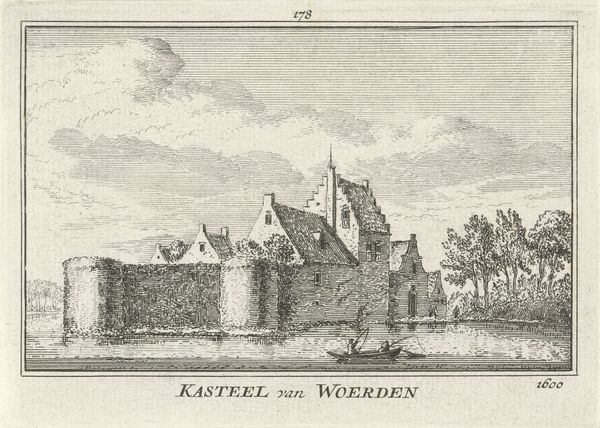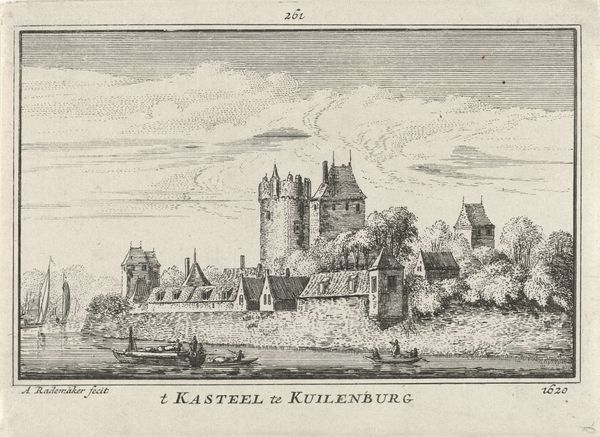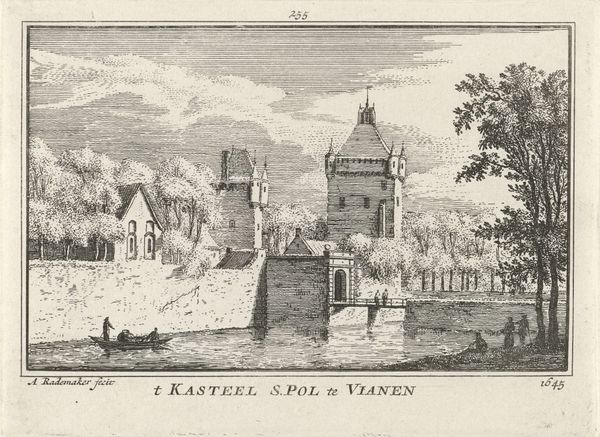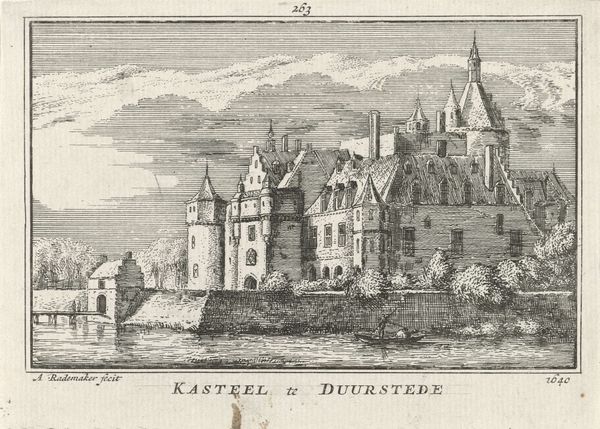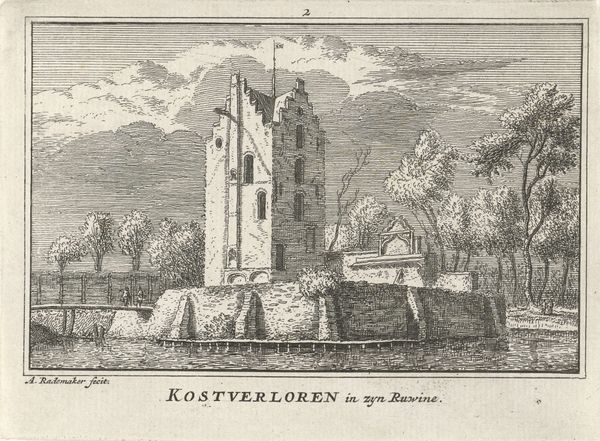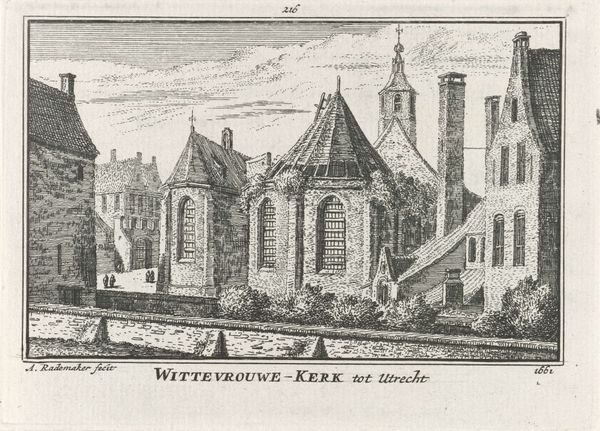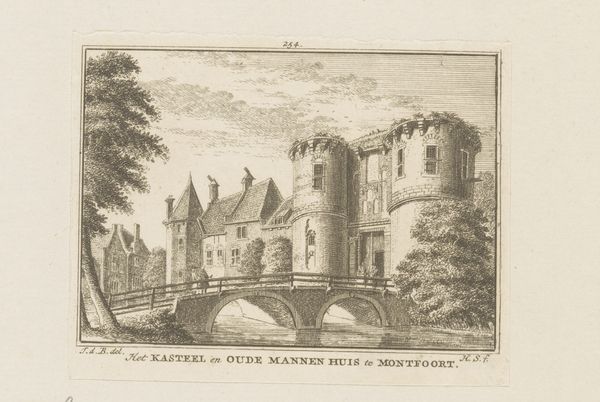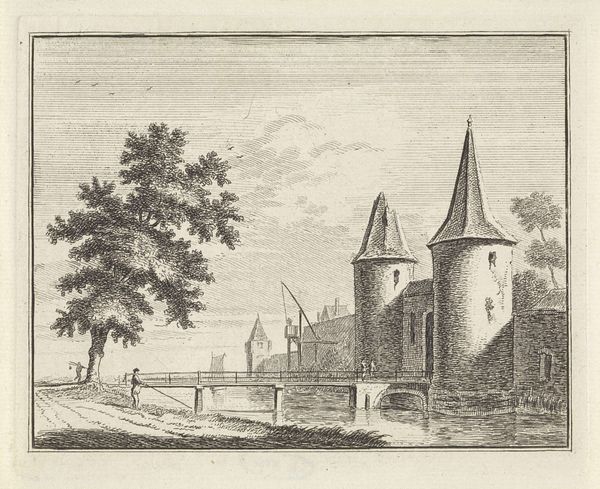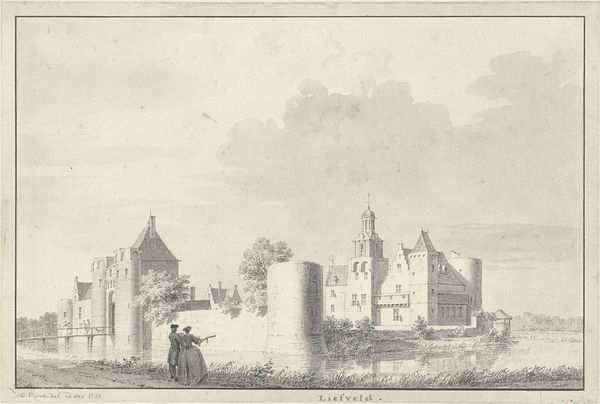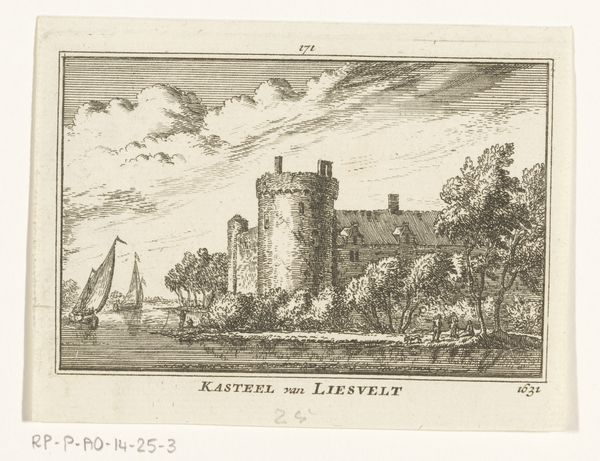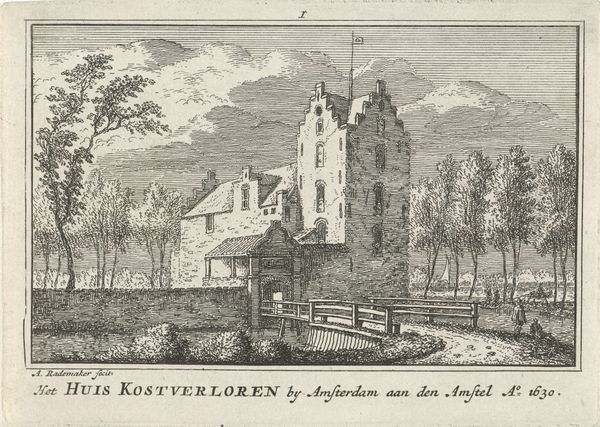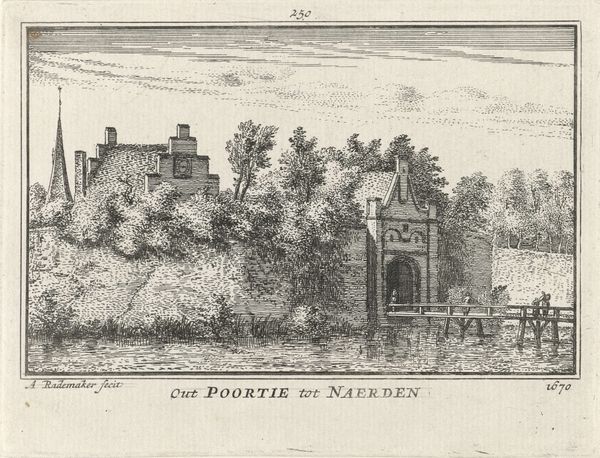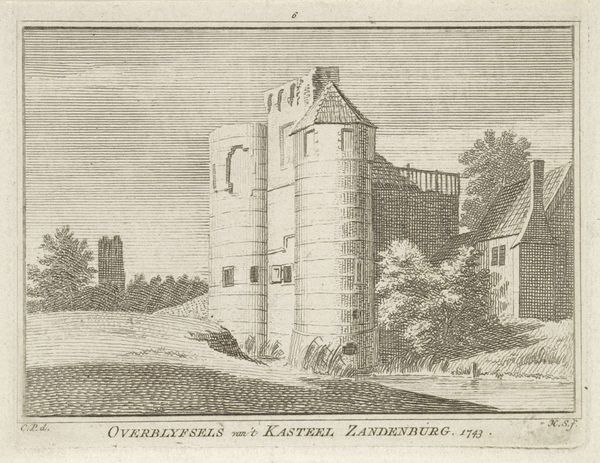
Dimensions: height 80 mm, width 110 mm
Copyright: Rijks Museum: Open Domain
Curator: Let's turn our attention to this rather captivating engraving titled "Gezicht op Slot Woerden, 1620," though created much later, sometime between 1725 and 1803, attributed to Abraham Rademaker. What are your first impressions? Editor: The texture grabs me. Look at the meticulous layering of those fine lines – a dense accumulation that creates an atmospheric greyscale world. You can almost feel the weight of those stone walls just from the density of the etching. Curator: It's fascinating how Rademaker evokes a sense of history. Woerden Castle seems almost a mythologized fortress of Dutch identity here. The water reflects the buildings, echoing into collective memory. Do you perceive any deliberate symbolic arrangement? Editor: Oh, absolutely. That water is key. Note the contrast between the massive architecture and the diminutive boats navigating below. Rademaker positions them to accentuate the structure's bulk. The castle *is* labor – generations' worth, shaped over time for political and defensive purposes. You feel the intense presence. Curator: Indeed, the boats are like witnesses or echoes moving on the face of time. Considering this baroque period artwork, can we discuss the social conditions? Who had the capital for prints like this? Editor: We are probably dealing with upper-class patrons, interested in documenting important national heritage sites like the Castle. Prints like these circulated historical and topographical awareness – the *view* becomes an act of possession. Also, reflect on how radically accessible printmaking makes these scenes! That expands our vision. Curator: A key element. And, if you observe how meticulously and elaborately the engraving is rendered, this level of material precision communicates power and influence too. The skill in itself becomes part of the cultural capital it creates. Editor: Agreed! I find myself thinking of all the steps needed to transfer this image from perception into object. Such labor! Each of these lines bears an impression not merely of craft, but of deliberate historical production. Curator: Thinking it through, I now appreciate its nuanced commentary—less overtly bombastic than some historical paintings, but quite penetrating in its silent assertions. Editor: Exactly. From a quiet picture emerges such volume, doesn’t it?
Comments
No comments
Be the first to comment and join the conversation on the ultimate creative platform.
